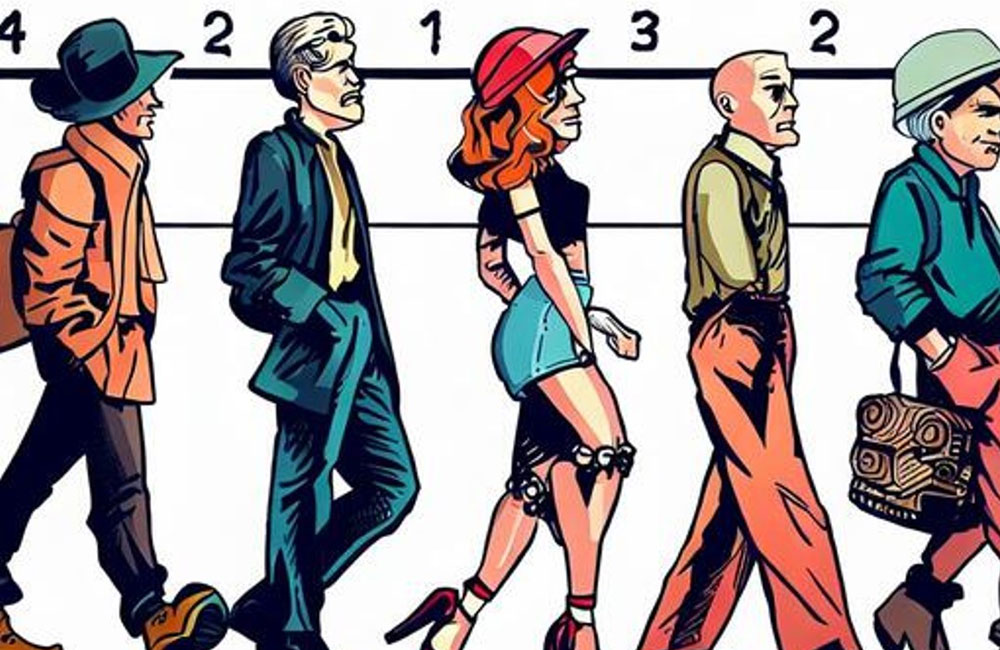Street style, once considered a niche subculture, has transformed into a global phenomenon that influences mainstream fashion trends. Originating from the streets and neighborhoods where creativity and individuality thrive, street style has gone through a remarkable evolution, captivating fashion enthusiasts and shaping the way we perceive and express personal style. Let’s explore the journey of street style from its humble beginnings to its current prominence in the fashion world.
- The Birth of Street Style: Street style emerged in the 20th century as a rebellion against mainstream fashion. Influenced by youth subcultures, countercultural movements, and the vibrant energy of urban communities, street style became a way for individuals to express their unique identities and challenge societal norms. From punk rockers to hip-hop pioneers, street style pioneers embraced unconventional aesthetics, mixing high and low fashion, and making bold statements through their clothing, hair, and accessories.
- Rise of Street Style Icons: As street style gained recognition, certain individuals became iconic figures, embodying the spirit of the movement and capturing the attention of both fashion insiders and the general public. From the punk fashion of Vivienne Westwood and Malcolm McLaren to the streetwear influence of brands like Supreme and A Bathing Ape, these icons and influencers shaped the narrative of street style and propelled it into the spotlight.
- The Impact of Streetwear: Streetwear, characterized by its casual and urban aesthetic, played a pivotal role in the evolution of street style. Inspired by skateboarding, hip-hop, and sports culture, streetwear brands like Nike, Adidas, and Stüssy gained popularity, blurring the lines between street style and high fashion. The collaboration between luxury brands and streetwear labels, such as Louis Vuitton and Supreme, further solidified streetwear’s place in mainstream fashion and elevated its status to new heights.
- Street Style in the Digital Age: The advent of social media and street style photography blogs transformed the way street style is documented and shared. Platforms like Instagram and street style-focused websites allowed street style enthusiasts to showcase their unique looks and gain worldwide visibility. Street style photographers like Scott Schuman of The Sartorialist and Tommy Ton captured candid moments of style on the streets, giving rise to a new breed of fashion influencers and further democratizing the accessibility and influence of street style.
- Runway to Street: In recent years, the influence of street style on the runway has become undeniable. High fashion designers and luxury brands have been inspired by streetwear aesthetics and the energy of the streets, incorporating elements of street style into their collections. This reciprocal relationship between street style and high fashion has resulted in a fusion of styles, blurring the boundaries between the two and allowing for greater creative expression and inclusivity within the fashion industry.
- Mainstream Adaptation: What was once considered counterculture has now permeated mainstream fashion. Street style trends, from sneakers and hoodies to oversized silhouettes and graphic prints, have become ubiquitous. High-street retailers and fast-fashion brands quickly adopt and reinterpret street style influences, making them accessible to a wider audience. The democratization of street style has allowed people from all walks of life to experiment with fashion, expressing their individuality and embracing the freedom that street style embodies.
Conclusion: The evolution of street style from a subculture to mainstream fashion represents a powerful shift in the industry. What was once an underground movement born from rebellion and individuality has now become a driving force that shapes trends, influences runways, and allows for self-expression on a global scale. Street style continues to evolve and inspire, reminding us that true style is not dictated by rules but rather emerges from the diverse tapestry of human creativity found on the streets.

